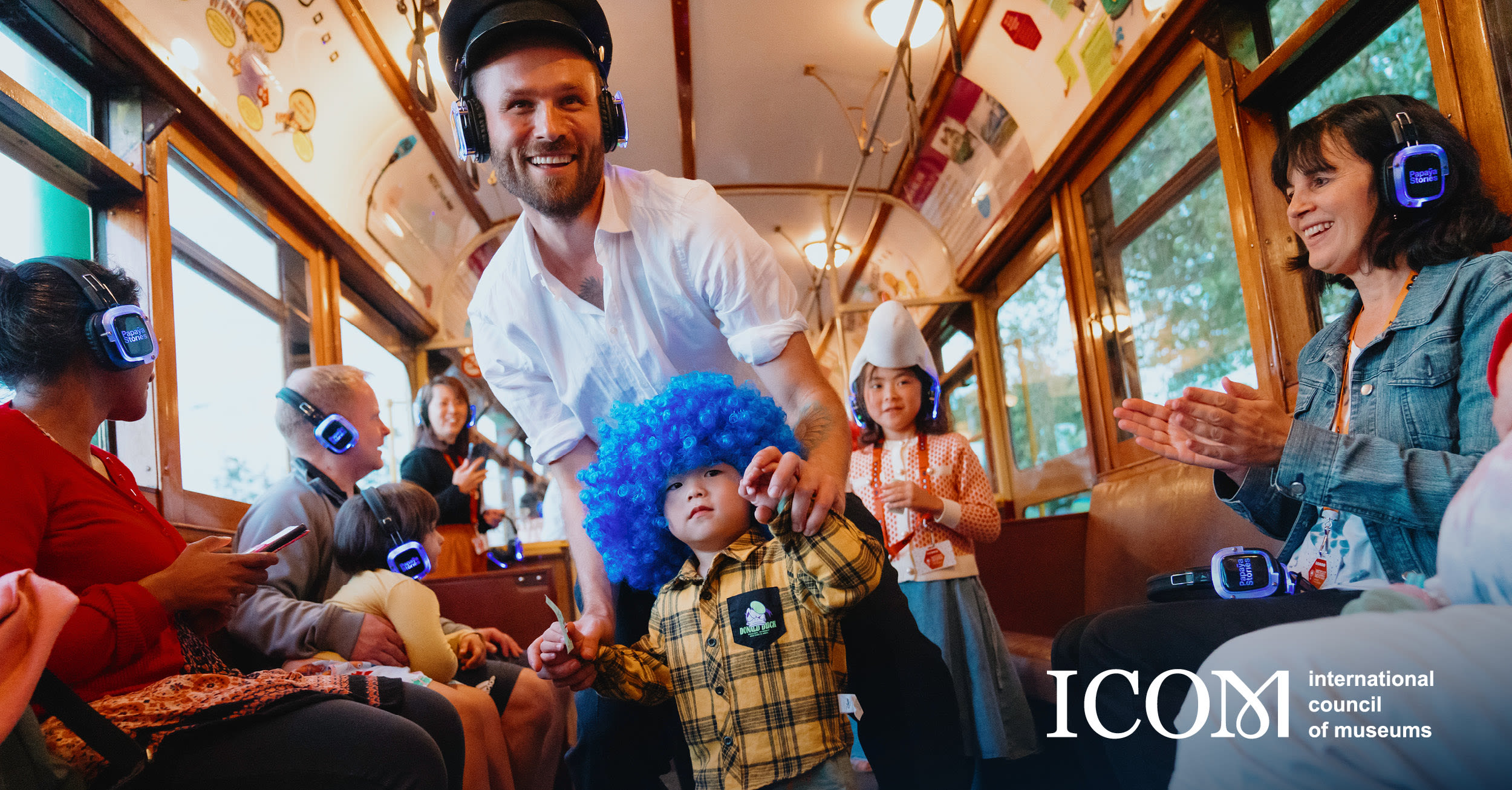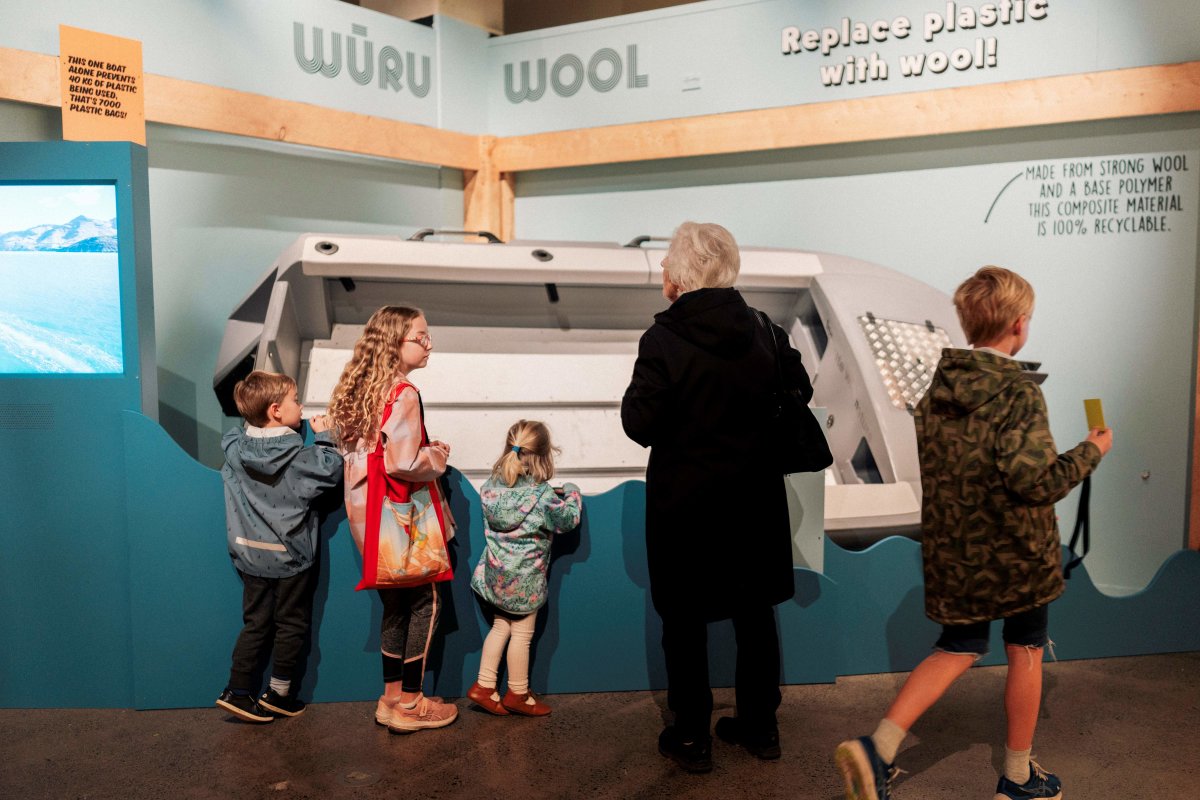Museums are more than just visitor numbers, but how can we measure their impact?

The International Council of Museums (ICOM) believes museums have a role to play in shaping and creating sustainable futures. In 2023, ICOM is focusing on three goals from the UN Sustainable Development Goals including: Goal 3 Global Health and Wellbeing: Ensure healthy lives and promote wellbeing for all at all ages, in particular concerning mental health and social isolation. This week sees International Museum Day, on Thursday 18 of May, so our Visitor Research Advisor, Sabine Doolin, takes a look at how MOTAT and other museums can achieve this.
Imagine a day in a museum ...
Visitors arrive and depart having had a range of different experiences. But what do we measure? Visitor numbers, revenue, and the most visited spaces? What about impact on wellbeing? And how can the value of these experiences be captured for visitors, and for wider society?
A day at MOTAT
People are enjoying a ride on the historic tram, are visiting the permanent collection displays, experiencing how a 3D printer works or are seeing the latest temporary exhibition – Switch Up Sustainable Solutions about sustainable enterprises in Aotearoa including solutions informed by mātauranga Māori.
Children are immersed in interactive activities and volunteers are demonstrating some historic objects as well as modern technology. A school group is taking part in an education programme and is busy with hands-on science activities.
Families are re-energising with a drink and a snack in the café, while discussing what they have seen. Before leaving, some browse the museum shop and buy mementos, books or children’s science and technology games.
In the evening, an after-hours event is on, which draws young people to the area. They are socialising, enjoying food from local food trucks and music from a local start-up band.
What usually gets reported from the day?
A total of 1000 people visited, 70 per cent were families, an amount of admission revenue was made and an amount in retail and café takings.
But what else happened?
Those one thousand people had an experience. Families enjoyed a safe, welcoming and open space, outside their home, and spent quality time with their children.
Some visitors learned something new about science and technology, thought about its history or were inspired to think about the future.
Several were inspired to engage more with science, some young visitors were encouraged to come up with innovative ideas themselves or even started considering technology as a career path.
Finding out about Māori approaches to sustainability added to more understanding of the history and potential of mātauranga Māori (Māori knowledge).
Being at the museum enhanced people’s sense of place and ownership of the community and the area. People had an opportunity to socialise and chat with museum staff or other visitors, which made some feel less lonely and improved their mental health.
Volunteers worked on preserving heritage objects and, in demonstrating them to visitors, they found purpose and social interaction, applied their skills or learned new skills that contributed to their life satisfaction or their career.
People walked around the site, some even recorded their steps on their step counter, and contributed to their physical health, while also finding out about the newest sports technology inventions.
Many left happier than when they arrived, and for the majority this wellbeing lasted beyond their visit. The exhibition triggered further conversations about sustainability among families at home. New memories were created, and, for some families, these memories might last a lifetime.
Wellbeing was generated in many different dimensions – a value far beyond visitor numbers.

Visitor research showed that MOTAT's Switch Up: Sustainable Solutions got families talking about what they could do at home to reduce waste and find more sustainable ways of doing life.
Measuring wellbeing
Considering these kinds of outcomes or measuring how museums contribute to the wellbeing of a community is a new approach to assessing the value of museums.
Economists and governments around the world have started looking beyond using GDP and economic output as key measures of progress. As Robert Kennedy stated in a speech in 1968, “GDP … measures everything … except that which makes life worthwhile”. More and more countries (including Aotearoa New Zealand) have started to monitor measures for the wellbeing of the population.
In the same way, we can – and should – measure the contribution of museums to the many aspects of wellbeing that enable communities to live lives of purpose, balance and meaning.
This is possible through using museum-specific indicators to measure against the New Zealand Treasury’s wellbeing framework, using data museums already gather or generating new data through surveys and other sources.
Author: Sabine Doolin
Sabine Doolin is Visitor Research Advisor at MOTAT and Co-Founder of QWB Lab, a company focused on unlocking the value of culture by measuring wellbeing. Find out more at https://www.qwblab.com/